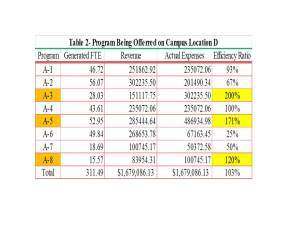Data supported by rigorous analyses have shown and confirmed that the current US education system will not sustain unless dramatic changes are taken. While the evidences are clear, some colleges however, are still operating under the BAU mindset. Therefore, the decision to make a change depends on how far the management wants to make the change. College decision makers can make whatever decision they want, and of course with all the consequences. There is a clear trend that they, the administrators move around when the reckoning (accreditation) days get closer. Hoping from one institution to another is one of the many practices that college administrators usually do when it comes to avoid accountability.
In this opportunity, AAEA would like to introduce a way where US colleges can apply to navigate the new sea of competition and regulations. The cost saving, in no doubt needs to be done. There are many ways to do it. For example, one may need to cut the operating cost based on where it occurs. In other words, a particular college can break down its expenses based on the activities or one may need to break down the cost by program or by any other possible measurable way. In the real world, it is easier to break down each activity and to relate it with a specific location. Supposed College A has five campuses as shown in Table 1 below.

These are the cost centers that generate revenue. In order to apply the cost analyses, one needs to know the expenses at each cost center at each location. As shown below, location H is the champion in generating the revenue. While it looks good, the number only shows part of the story. Without information of what is the total spending on that location, one cannot make any conclusion. It will be good if total expenses are lower than $11 million. Even under such a case, it does not necessary mean that each activity at that particular location has been managed in the most efficient way. For example, if 50 percent of revenue is spent to pay non-teaching activities at Location H while it is 10 % in location C for the same category, then the decision makers surely can say, something fishy may have happened at location H. The efficiency (spending to revenue) ratio tells it all. If the ratio is greater than one at location A, then appropriate action needs to be taken. The same principle can be applied to any unit within College A. Some people call such an approach as ABC costing. It all about wise business practices–whatever you want to call it. The hardest part will be to control the administrative or overhead cost, and AAEA suggests to combine standard costing and ABC concept to deal with the issue.
Please click the following link to express your opinion ===> —-SURVEY—-


